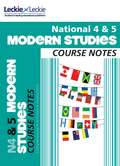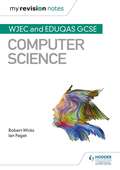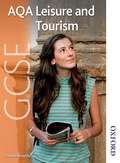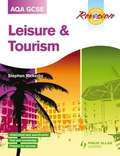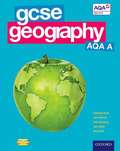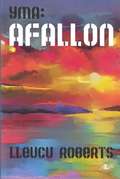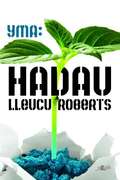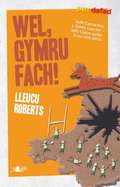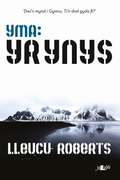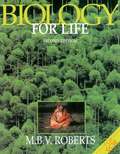- Table View
- List View
National 4/5 Modern Studies Course Notes (PDF)
by Jenny Reynolds Jenny Gilruth Elizabeth ElliotThe National 4 and 5 Modern Studies Course Notes help map your route through the CfE programme and provide comprehensive and authoritative guidance. Course Notes give a practical, supportive approach to help deliver the new curriculum and offer an appropriate blend of sound teaching and learning with exam and assessment guidance.
WJEC and Eduqas GCSE Computer Science - My Revision Notes (PDF)
by Rhys Richardson Robert WicksExam board: WJEC Level: GCSE Subject: Computer Science First teaching: September 2017 First exams: Summer 2019 Strengthen your students' understanding and upgrade their confidence with My Revision Notes: WJEC Eduqas GCSE (9-1) Computer Science. Written by leading Computer Science experts this is the only revision guide aimed specifically at helping students prepare for the WJEC or Eduqas exam - a new title in the top-selling revision guide series, loved by students and recommended by teachers. · Let students take control of their revision - plan and focus on the areas where they need to improve their knowledge and understanding with advice and summaries from the experts. · Help them achieve their potential - exam tips on computer science terms and concepts highlighted throughout the book · Improve their exam skills - a range of exam practice questions and 'test yourself questions' with answers at the back of the book.
AQA Leisure and Tourism GCSE: Student's Book
by Stephen RickerbyAQA GCSE Leisure and Tourism is the only resource to have been developed with and exclusively endorsed by AQA for the new 2009 specification. With a real focus on tracking individual progress, you can improve your students' chance of exam success through a unique blend of print and online resources.
AQA GCSE: Leisure & Tourism (PDF)
by Steve RickerbyThis revision guide has been specifically written for students following the AQA GCSE Leisure and Tourism course. The guide covers the core topics of the specification, outlining the important facts and key terms students need to know. Case studies are included where appropriate, and each section concludes with test-yourself review questions and sample exam questions with tips.
GCSE Geography AQA A: Student Book (PDF)
by Steve Rickerby Jack Gillett Catherine Hurst Jane Holroyd Meg GillettIMPORTANT: This PDF file is created from a non-text recognisable PDF and will contain some errors. nbsp; GCSE Geography AQA A is the most student-friendly resource for AQA GCSE specification A - written specially to target the demands of the specification. This Student Book engages all your students with the up-to-date case studies and accessible, motivating content, while also retaining exam-focus. Easy-to-use double-page spreads feature clearly-written objectives, accessible text, and high quality photos, maps, and diagrams, while support for Controlled Assessment and a bank of exam-style questions help students succeed at GCSE. The book also features a glossary and full index.
Arm Bends (Large Print)
by RnibThis page shows the arm, shoulder and two muscles seen from the front. The shoulder is in the top right. A locator dot and title are shown. These must always be at the top left of the page when the image is the right way up. The lower arm goes horizontally to the left centre of the page. Left and right of the vertical humerus bone are muscles. When the biceps (left of the humerus) contracts it pulls on the lower arm so that it moves upwards. The triceps (right of the humerus) relaxes.
Arm Bends (UEB Contracted)
by RnibThis page shows the arm, shoulder and two muscles seen from the front. The shoulder is in the top right. A locator dot and title are shown. These must always be at the top left of the page when the image is the right way up. The lower arm goes horizontally to the left centre of the page. Left and right of the vertical humerus bone are muscles. When the biceps (left of the humerus) contracts it pulls on the lower arm so that it moves upwards. The triceps (right of the humerus) relaxes.
Arm Straightens (Large Print)
by RnibThis page shows the arm, shoulder and two muscles seen from the front. A locator dot and title are shown. These must always be at the top left of the page when the image is the right way up. The shoulder is in the top right. The arm goes down to the bottom left of the page. Left and right of the vertical humerus bone are muscles. When the triceps (right of the humerus) contracts, it pulls on the lower arm so that it moves downwards. The biceps (left of the humerus) relaxes.
Arm Straightens (UEB Uncontracted)
by RnibThis page shows the arm, shoulder and two muscles seen from the front. A locator dot and title are shown. These must always be at the top left of the page when the image is the right way up. The shoulder is in the top right. The arm goes down to the bottom left of the page. Left and right of the vertical humerus bone are muscles. When the triceps (right of the humerus) contracts, it pulls on the lower arm so that it moves downwards. The biceps (left of the humerus) relaxes.
Hurricane areas of the world (UEB uncontracted)
by RnibThis is a multi-page image of Hurricane areas of the world, set on two pages. There are locator dots shown, which will be at the top left of each page when the images are the right way up. Key to hurricane areas of the world: This page shows the key to the diagram of hurricane areas of the world. On the left hand side of the page is a list of abbreviations for the continents of the world, listed in alphabetical order. In the middle of the page, running from top to bottom, is a line dividing the two parts of the key from each other. On the right hand side of the page are examples of the symbols, lines and textures (colours) used on the diagram. They are displayed in a column in alphabetical order with descriptive labels to the right. Hurricane areas of the world: This page shows a map of the world bounded by a dashed line image border. The land is shown by the textured areas of the map. On the left of the page are, North and South America, in the centre Europe, and on the right Asia and Australia. The heavy dashed line of the Equator runs horizontally across the middle of the page. The hurricanes and their directions are shown on the map as lines with arrowheads, which curve clockwise when up the page from the Equator and anti-clockwise when down the page. There are three of them just above the line of the Equator on the left of the page. On the right of the page, there are six above the Equator and six below.
Meiosis Phase One (UEB Uncontracted)
by RnibThese pages show late interphase before meiosis, and five stages of meiosis phase one. There is a locator dot shown on each page, which will be at the top left of the page when the image is the correct way up. Meiosis is cell replication where a cell divides to produce four non-identical gametes, each with only one set of chromosomes instead of the usual two sets found in all other cells.Late interphase before meiosis. This page shows a cell immediately before meiosis starts. The cell is a large rounded shape in the centre of the page. Its nucleus fills the bottom of the cell and two centrioles are in the top of the cell. The twenty three pairs of chromosomes in the nucleus have replicated to form a mass of chromatids (double chromosomes) which are tightly coiled. Note the size of the nucleus and the centrioles in relation to the overall size of the cell are greatly enlarged for clarity. Only some of the chromatin is shown, also for clarity. Meiosis - stage one, early prophase I. This page shows the start of meiosis. The cell is in the centre of the page. In the top of the cell the centrioles to the left and right have the mitotic spindle growing between them. The nucleus shows two chromatids - the double chromosomes. The ends of the chromosomes of the chromatids are crossed in two places, to the top and bottom of the pair. In reality in humans there would be twenty three pairs of chromatids.Meiosis - stage one, late prophase I. This page shows chromatids after crossover. The cell is in the centre of the page. In the top of the cell the centrioles to the left and right have the mitotic spindle growing between them. The nucleus shows two chromatids - the double chromosomes. The ends of the chromosomes of the chromatids have swapped DNA coding where they were crossed. The ends to the top centre of the chromatids have swapped and the ends of the other pair of chromosomes to the bottom centre have also swapped.Meiosis - stage two, metaphase I. This page shows the completed mitotic spindle with a centriole to the left and right. The nuclear envelope has disappeared. The chromatids have attached themselves side by side to the centre of the spindle on the central microtubule by their centromeres in the centre of the image. For clarity other chromatids are not shown so the microtubule to the top and bottom of the image appears empty. In reality there would be many more pairs of chromatids and microtubules.Meiosis - stage three, anaphase I. This page shows the centromeres have separated. The microtubules of the spindle are retracting to the left and right. Each chromatid of the pair of chromosomes are migrating to opposite ends of the spindle to the left and right.Meiosis - stage four, telophase I. This page shows centrioles to the left and to the right. One chromatid is in the left and one chromatid is in the right of the cell. To the top and bottom centre of the cell the plasma membrane is pinching in and starting to divide the cytoplasm.
Miscellaneous laboratory equipment 1 (Large Print)
by RnibThis page shows eight items of laboratory equipment. All are seen from the side in cross section, except the micro-chambered test slide in the top left corner of the page, which is viewed from the top. There is a locator dot and title shown, which will be at the top left of the page when it is the correct way up. The items are arranged in three columns with each item labelled down the page.
Miscellaneous Laboratory Equipment 1 (UEB Contracted)
by RnibThis page shows eight items of laboratory equipment. All are seen from the side in cross section, except the micro-chambered test slide in the top left corner of the page, which is viewed from the top. There is a locator dot and title shown, which will be at the top left of the page when it is the correct way up. The items are arranged in three columns with each item labelled down the page.
Periodic table (Large Print - colour)
by RnibThis is a multi-page document showing the periodic table of chemical elements, and on the Large Print version, a key to the table. The LP key is on the first page. The table is in five parts, which can be joined together. There is a locator dot and title shown on each page. These will be at the top left of the page when it is the correct way up. This is a complex diagram and blind and partially sighted people may find it helpful to have some sighted assistance at first viewing. The table shows element categories (in large print only), groups (families) and periods, plus the atomic number, the chemical symbol and atomic weight for each element. Key to Large Print periodic table - The key to the table shows the colours used to represent the element categories, and is arranged in two columns. In each column, the colour samples are to the left with their names to the right. The categories are not shown on the tactile version of the table, as there is insufficient space in the cells for textures. It is recommended that you download the Periodic table overview from the ImageShare site, as this shows the element categories in tactile format. Periodic tabl The table comprises cells arranged in columns and rows. A cell shows the atomic number, chemical symbol and atomic weight for an element. In the Large Print version of the table, the cell colour relates to the element category as shown on the key. The vertical columns show the groups (or families) of elements. The groups are numbered across the top of the page. A horizontal row in the table is a period. The periods are numbered on the left side of the first page of the table. In this arrangement of the periodic table, the lanthanoids and actinoids (periods 6 to 7, known as the f-block) are separated from the other elements and are shown stretching across the bottom of the page. The f-block on pages 3, 4 and 5 has no periodic numbers marked on the page. Joining the page - To allow space for braille labelling, this table has been split into five sections on separate pages. Join them to each other in number order, from left to right, trimming the periodic numbers as required. Pages 1 and 5 are A4 size and in portrait orientation. Pages 2 to 4 are A3 size and in landscape orientation. Trim the pages to allow joining, using the light, vertical dashed grid lines as guides. When joining the tactile pages, care should be taken to avoid covering any part of the table.
Periodic table overview (UEB Contracted)
by RnibThis is an overview to the periodic table with an accompanying key. It is a multi-page image set on two pages. There is a locator dot shown, which will be at the top left of the page when the image is the correct way up. The table shows element categories, groups and periods. Key to periodic table overvw - The textures/colours used on the overview to the periodic table of elements are shown in two columns. The texture/colour examples representing the element categories are labelled to the right. The same colours are also used on the full-sized periodic table mentioned above. Periodic table overvw The vertical columns show the groups (families) of elements. The groups are numbered across the top of the page. A horizontal row in the table is a period. The periods are numbered at the left of the page. In this arrangement of the periodic table, the lanthanoids and actinoids (the f-block) are separated from the other elements and are shown stretching across the bottom of the page. Full-size table A full-size version of the table is also available. It shows the element categories (in Large Print only), groups and periods, plus the atomic number, the chemical symbol and atomic weight for each element. Additional note: embossed .brf Periodic table is available at; https://www.rnibbookshare.org/cms/braille-teaching-resources
Periodic table (UEB Uncontracted)
by RnibThis is a multi-page document showing the periodic table of chemical elements, and on the Large Print version, a key to the table. The LP key is on the first page. The table is in five parts, which can be joined together. There is a locator dot and title shown on each page. These will be at the top left of the page when it is the correct way up. This is a complex diagram and blind and partially sighted people may find it helpful to have some sighted assistance at first viewing. The table shows element categories (in large print only), groups (families) and periods, plus the atomic number, the chemical symbol and atomic weight for each element. Key to Large Print periodic table - The key to the table shows the colours used to represent the element categories, and is arranged in two columns. In each column, the colour samples are to the left with their names to the right. The categories are not shown on the tactile version of the table, as there is insufficient space in the cells for textures. It is recommended that you download the Periodic table overview from the ImageShare site, as this shows the element categories in tactile format. Periodic tabl The table comprises cells arranged in columns and rows. A cell shows the atomic number, chemical symbol and atomic weight for an element. In the Large Print version of the table, the cell colour relates to the element category as shown on the key. The vertical columns show the groups (or families) of elements. The groups are numbered across the top of the page. A horizontal row in the table is a period. The periods are numbered on the left side of the first page of the table. In this arrangement of the periodic table, the lanthanoids and actinoids (periods 6 to 7, known as the f-block) are separated from the other elements and are shown stretching across the bottom of the page. The f-block on pages 3, 4 and 5 has no periodic numbers marked on the page. Joining the page - To allow space for braille labelling, this table has been split into five sections on separate pages. Join them to each other in number order, from left to right, trimming the periodic numbers as required. Pages 1 and 5 are A4 size and in portrait orientation. Pages 2 to 4 are A3 size and in landscape orientation. Trim the pages to allow joining, using the light, vertical dashed grid lines as guides. When joining the tactile pages, care should be taken to avoid covering any part of the table. Additional note: embossed .brf Periodic table is available at; https://www.rnibbookshare.org/cms/braille-teaching-resources
Spirometer trace (Large Print)
by RnibThis is an image of a spirometer trace. It is a multi-page image set on two pages, a key and then the diagram page. A locator dot and title are shown on both pages. These must always be at the top left of the page when the image is the right way up. Key to spirometer trace. The first page shows the abbreviations and textures used on the spirometer diagram page. The abbreviations and samples of the texture are on the left with their description on the right. Spirometer trace. The second page shows a spirometer trace: it is like a graph with the Y axis being lung volume, and the X axis being time. The trace is a thick wavy line with spikes going across the page from left to right. There are two peaks going up towards the top of the page, and two dips going down towards the bottom of the page. The diagram is labelled with abbreviations.
Spirometer trace (UEB Contracted)
by RnibThis is an image of a spirometer trace. It is a multi-page image set on two pages, a key and then the diagram page. A locator dot and title are shown on both pages. These must always be at the top left of the page when the image is the right way up. Key to spirometer trace. The first page shows the abbreviations and textures used on the spirometer diagram page. The abbreviations and samples of the texture are on the left with their description on the right. Spirometer trace. The second page shows a spirometer trace: it is like a graph with the Y axis being lung volume, and the X axis being time. The trace is a thick wavy line with spikes going across the page from left to right. There are two peaks going up towards the top of the page, and two dips going down towards the bottom of the page. The diagram is labelled with abbreviations.
Spirometer trace (UEB Uncontracted)
by RnibThis is an image of a spirometer trace. It is a multi-page image set on two pages, a key and then the diagram page. A locator dot and title are shown on both pages. These must always be at the top left of the page when the image is the right way up. Key to spirometer trace. The first page shows the abbreviations and textures used on the spirometer diagram page. The abbreviations and samples of the texture are on the left with their description on the right. Spirometer trace. The second page shows a spirometer trace: it is like a graph with the Y axis being lung volume, and the X axis being time. The trace is a thick wavy line with spikes going across the page from left to right. There are two peaks going up towards the top of the page, and two dips going down towards the bottom of the page. The diagram is labelled with abbreviations.
Translation
by RnibThis diagram shows three triangles; the original triangle and its translation in two different ways to two new positions. A locator dot and title are shown. These must always be at the top left of the page when the image is the right way up. There is a graph with all four quadrants showing, and the x and y axes ranging from -3 to 3. The x and the y axes intersect at the origin marked by an O. Axes values are positive to the right and to the top of the diagram. Axes values are negative to the left and to the bottom of the diagram. Not all axis division marks are labelled. Some of the braille uses maths code notation. When a shape is translated, it stays the same shape and orientation; only its position changes. The original triangle is in the top left quadrant. There is a translation to the right of a value of 4, and then a translation down of a value of 1. There is also a second translation, right to a value of 4, and then down to a value of 4. The movement of the first triangle is indicated by a heavy dashed line.
Afallon (Cyfres Yma #3)
by Lleucu RobertsDyma nofel olaf trioleg gyffrous Lleucu Roberts sydd wedi ei gosod yn Aberystwyth ôl-apocalyptaidd yn 2141. Pan mae rhai'n cael eu cipio o Gymru, i ble maen nhw'n mynd? Ar yr wyneb mae'r lle fel Afallon ond mae themâu dwys ynddi – rôl merched mewn cymdeithas, trin pobol sydd yn 'wahanol', rhyddid a chaethiwed, yn ogystal ag elfennau o 'Big Brother' a 'The Handmaiden's Tale'. [This is the final title in a trilogy by Lleucu Roberts set in a post-apocalyptic Aberystwyth in 2141. When some people are snatched from Wales, where do they go? Intense themes lie under an idyllic surface: women's role in society, the treatment of people who are 'different', freedom and captivity, together with elements of 'Big Brother' and 'The Handmaiden's Tale'.] *Datganiad hawlfraint Gwneir y copi hwn dan dermau Rheoliadau (Anabledd) Hawlfraint a Hawliau mewn Perfformiadau 2014 i'w ddefnyddio gan berson sy'n anabl o ran print yn unig. Oni chaniateir gan gyfraith, ni ellir ei gopïo ymhellach, na'i roi i unrhyw berson arall, heb ganiatâd.
Hadau (Cyfres Yma #2)
by Lleucu RobertsMae Hadau wedi ei gosod yn y dyfodol ar ôl i fom niwcliar ddinistrio gorllewin Ewrop. Roedd Cymry wedi sefydlu cymuned mewn ynys ger Norwy a Cai a Gwawr wedi eu magu yno. Maen nhw erbyn hyn wedi cyrraedd tref Aberystwyth yn yr henwlad (Cymru) ac yn dod o hyd i lwyth cyntefig sydd yn prysur rhedeg mas o fwyd a hadau i dyfu cnydau. [Seeds have been sown in the future after a nuclear bomb has devastated Western Europe. Some Welshmen had established a community on a Norwegian Island where Cai and Gwawr were brought up. The have now reached Aberystwyth where they discover a primitive tribe which is swiftly running out of food and seeds to grow crops.] *Datganiad hawlfraint Gwneir y copi hwn dan dermau Rheoliadau (Anabledd) Hawlfraint a Hawliau mewn Perfformiadau 2014 i'w ddefnyddio gan berson sy'n anabl o ran print yn unig. Oni chaniateir gan gyfraith, ni ellir ei gopïo ymhellach, na'i roi i unrhyw berson arall, heb ganiatâd.
Wel, Gymru Fach (Cyfres Pen Dafad)
by Lleucu RobertsNofel yn sôn am wrthdaro sy'n digwydd yng Nghymru heddiw - rhwng y de a'r gogledd, rhwng Saeson a Chymry - ond hefyd yn dangos sut y mae'r cymeriadau'n datrys y gwahaniaethau hyn ac yn cydweithio pan fo angen. [A novel which touches on present day conflicts in Wales - between north and south and between the English and the Welsh - but which shows how the characters gan settle their differences and pull together when the need arises.]
Yr Ynys (Cyfres Yma)
by Lleucu RobertsY nofel gyntaf mewn trioleg ar gyfer yr arddegau hŷn. Mae Gwawr a Cai yn paratoi ar gyfer taith yn ôl i'r Henwlad er mwyn darganfod mwy am fywyd eu hynafiaid cyn ffrwydriad dinistriol y Diwedd Mawr a gafodd effaith tyngedfennol ar y byd. [The first title in a trilogy for older teenagers. Gwawr and Cai prepare to journey back to the Henwlad where they hope to learn about the lives of their ancestors before a destructive explosion which had a fateful effect on the world.] *Datganiad hawlfraint Gwneir y copi hwn dan dermau Rheoliadau (Anabledd) Hawlfraint a Hawliau mewn Perfformiadau 2014 i'w ddefnyddio gan berson sy'n anabl o ran print yn unig. Oni chaniateir gan gyfraith, ni ellir ei gopïo ymhellach, na'i roi i unrhyw berson arall, heb ganiatâd.
Biology for Life (2nd edition)
by Roberts, Michael Bliss VaughnBiology for Life is the leading text for 14-16 year olds in Caribbean schools. This flexible, attractive text is clear and easy to read, providing material for a wide range of abilities. Biology for life contains practical investigations which give clear instructions, and allow students to work independently of the teacher.
